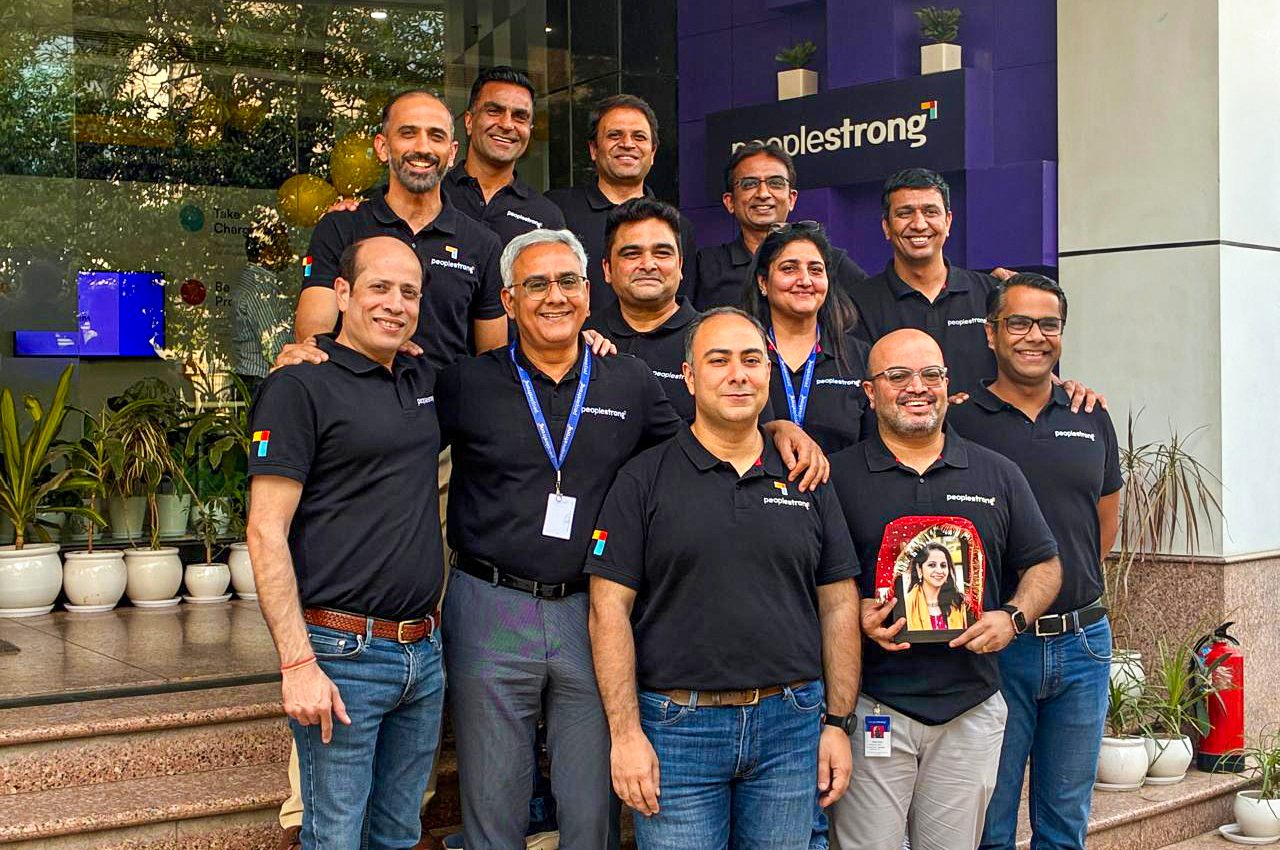Every second counts when making hiring decisions and securing the right talent. Screening resumes can be the make-or-break factor.
Modern recruiters know that their screening process must be precise, efficient, and thorough—qualities that are almost impossible to achieve without leveraging the right technology.
According to recent studies, nearly 99% of Fortune 500 companies regularly use automated tracking or screening platforms for hiring.
Automated resume screening offers recruiters a streamlined and efficient way to sift through countless applications. It helps ensure only the most qualified candidates make it to the next stage. In this blog, we’ll explore the ins and outs of automated resume screening, its benefits, and how it revolutionizes recruitment.
What Goes Behind Screening Processes?
Screening for the perfect candidate goes beyond merely publishing job requirements and waiting for applications to roll in. It’s a meticulous process requiring significant pre-screening work, as shown in the templates below.

Initially, candidates find job postings on various platforms and refine their search by keywords, location, experience, or salary. They may register on a candidate portal, complete their profiles, and apply for jobs. From the sourcing team’s perspective, they track the entire applicant lifecycle on the portal, manage assessment schedules, and use tools to keep the process organized.
Once applications are received, the recruitment team logs into the system, reviews tagged candidates, and utilizes auto-matching features to find top profiles. They screen these profiles, often using job portals and company databases, to ensure a good fit. The resume status is updated, notifying candidates and stakeholders, and progressing suitable candidates to the next stage.

Automated resume screening significantly streamlines these steps. By leveraging technology, recruiters can handle their workload efficiently, ensuring a smoother, faster, and more accurate candidate experience.
Suggested Read:
Recruitment Screening Process: A Definitive Guide for HRs
What is Automated Resume Screening?
Automated resume screening is a process where tracking systems use machine learning algorithms to evaluate resumes on the basis of predefined configurations, such as keywords, skills, and experience, to shortlist the most suitable candidates.
A recent survey highlights that 67% of large companies and 35% of small businesses also implement ATS software to streamline their hiring processes.
An automated resume screening platform enhances the screening process by automating the initial review of applications, significantly reducing the time recruiters spend on manual screening.
It sorts and ranks candidates, filters out unqualified resumes, and highlights those that match the job requirements.
For example, a company looking to fill a software developer position might use an automated platform to scan resumes for specific programming languages, certifications, education, and relevant experience.
Why is Automated Resume Screening Needed for Modern Day Hiring?
Replacing an employee can be incredibly costly, sometimes up to nine months’ worth of their salary.
Automated resume screening can help mitigate this issue by streamlining the hiring process, improving the quality of hires, and saving recruiters valuable time. Let’s explore why it’s a game-changer for recruiters and organizations alike.
1. It Enables Accurate Candidate Matching
Automated resume screening ensures that candidates are matched accurately to job requirements. The screening platform scans for specific keywords, skills, and experiences, filtering out applicants who don’t meet the criteria. This precision means you get a shortlist of candidates who are truly suited for the role, increasing the likelihood of finding the perfect fit.
2. Saves Time, Costs, and Effort
Think about the hours spent manually sifting through piles of resumes. An automated screening platform does this in a fraction of the time, freeing up your recruiters to focus on more strategic tasks. By automating the initial screening process, companies save not only time but also money and effort, making the entire hiring process more efficient and cost-effective.
3. Reduces Bias Through Standardized Screening Process
Human bias, whether conscious or unconscious, can influence hiring decisions. Automated resume screening uses standardized criteria, ensuring every application is evaluated fairly and objectively. This helps in promoting diversity and inclusion within the organization by giving every candidate an equal opportunity.
4. Enables Faster TAT for Hiring Decisions
In today’s fast-paced job market, speed is crucial. An automated screening platform accelerates the hiring process by quickly identifying the best candidates and moving them through the pipeline faster. This leads to quicker hiring decisions and reduces the risk of losing top talent to competitors.
5. Helps Manage Large Volume of Applications
When job postings attract hundreds or even thousands of applications, managing them can be overwhelming. Automated resume screening handles large volumes with ease, ensuring no application falls through the cracks. This means every candidate gets considered, and the best ones are promptly identified.
Automated Resume Screening: Best Practices
To maximize automated resume screening, it’s essential to follow best practices that optimize the process and ensure fairness. Here are some actionable tips to keep your system running smoothly and effectively.
1. Incorporate Human Oversight
Even the best-automated systems need a human touch. Recruiters should always review the findings to ensure that qualified candidates aren’t overlooked due to rigid algorithms. Combining technology with human intuition creates a more balanced and effective screening process.
2. Ensure Algorithm Transparency
It’s crucial to understand how your system makes decisions. Ensure that the algorithms used are transparent so you know exactly what criteria are being applied. This knowledge allows you to make informed adjustments and build trust in the system. Here are a few tips on how you can go about this:
- Regularly audit the algorithm’s performance and outputs.
- Document and review the criteria used by the algorithms.
- Provide access to algorithmic decision-making processes for stakeholders.
- Incorporate feedback loops to improve and update the algorithms continuously.
3. Regularly Update and Train the System
Your software should evolve with your company’s needs. Regularly update the system with new keywords, skills, and criteria relevant to your industry. Training the system to recognize these changes ensures it remains accurate and effective in identifying top talent.
4. Use a Customizable and Configurable System
Every organization is unique, and so are its hiring needs. Choose solutions like PeopleStrong that allow for customization and configuration. This flexibility ensures the system can be tailored to your specific job requirements and company culture, leading to better candidate matches.
5. Integrate with Broader HR Systems
For maximum efficiency, integrate your software with other HR systems like onboarding, payroll, and performance management. This seamless integration creates a unified HR ecosystem, simplifying processes and improving data accuracy across the board.
Features to Look for in Automated Resume Screening Tools
Choosing the right automated resume screening tool can make a significant difference in your hiring process. Here are some essential features to look for to ensure you’re getting the best bang for your buck:
1. Customizable Screening Criteria
No two companies are alike, and neither are their hiring needs. Look for a tool that allows you to customize screening criteria based on your specific job requirements. Whether it’s skills, experience, or qualifications, having the flexibility to set your own parameters ensures you find the best matches for your roles.
2. Advanced Search Capabilities
A powerful search function is a must-have. Your automated screening platform should enable you to filter candidates based on various criteria quickly. From Boolean searches to advanced filters for specific certifications or industries, the more robust the search capabilities, the better you’ll be able to zero in on top talent.
3. AI-Driven Keyword Matching
Say goodbye to the days of manually sifting through resumes. Look for tools that use AI to match keywords from job descriptions with candidate resumes. This feature helps ensure that only the most relevant candidates make it to your shortlist, saving you time and effort.
4. Resume Parsing
Manual data entry is tedious and error-prone. A good screening platform should include resume parsing capabilities that automatically extract and organize candidate information from resumes. This not only speeds up the screening process but also ensures data accuracy and consistency.
5. Candidate Scoring Algorithms
Make your decision-making process even easier with candidate scoring algorithms. These algorithms rank candidates based on how well their qualifications match your job requirements. This scoring system helps prioritize the most suitable candidates, streamlining the initial screening phase.
6. Integration with Existing Systems
Your screening platform should play well with others. Ensure it can integrate seamlessly with your organization’s existing HRIS, CRM, job boards, and communication platforms. This integration creates a unified workflow, reducing manual data transfers and ensuring all systems are updated in real-time.
How You Can Elevate Your Screening Processes Using PeopleStrong Recruitment Software
PeopleStrong’s recruitment software offers a suite of features designed to streamline and enhance your hiring process, making it faster and more efficient:
- AI-Powered Candidate-Job Matching: With AI-driven algorithms, PeopleStrong matches candidates to job roles based on their skills, experience, and qualifications. This ensures you get the best fit for each position, reducing time spent on unsuitable applicants.
- Resume Parsing: This automates the tedious task of data entry. The software extracts key information from resumes and organizes it efficiently, making it easier to review and shortlist candidates.
- Skill Recommendations: Supercharge your job creation process with intelligent skill recommendations. PeopleStrong suggests relevant skills based on the job description, ensuring your requirements are comprehensive and up-to-date.
- Plug-in Assessments: Integrate assessments directly into your recruitment process. Evaluate candidates’ skills and competencies easily, ensuring they meet your standards before proceeding.
- Automated Actions and Templates: Boost your hiring velocity with pre-built templates and automated actions. Schedule interviews, send notifications, and manage candidate communications seamlessly, saving time and increasing productivity.
- Omni-Channel Sourcing: With omni-channel sourcing, you can reach candidates wherever they are. Integrate your job listings with social media platforms, internal portals, and over 3,500 job boards to maximize your reach and attract top talent.
- Geo-Specific Customization: Tailor your recruitment processes to fit your local needs with geo-specific customization. PeopleStrong supports localized language and hiring workflows, ensuring your global teams are aligned and efficient.
Taking Your Screening Process to the Next Level
Streamlining your screening process with automated tools is crucial for modern recruitment.
The next step is to evaluate your current system and consider implementing advanced solutions. PeopleStrong offers a comprehensive recruitment platform that can transform your hiring strategy with its AI-powered features and robust analytics.
Ready to elevate your hiring process? Schedule a demo with PeopleStrong today and discover how you can find and hire the right talent faster and smarter.












